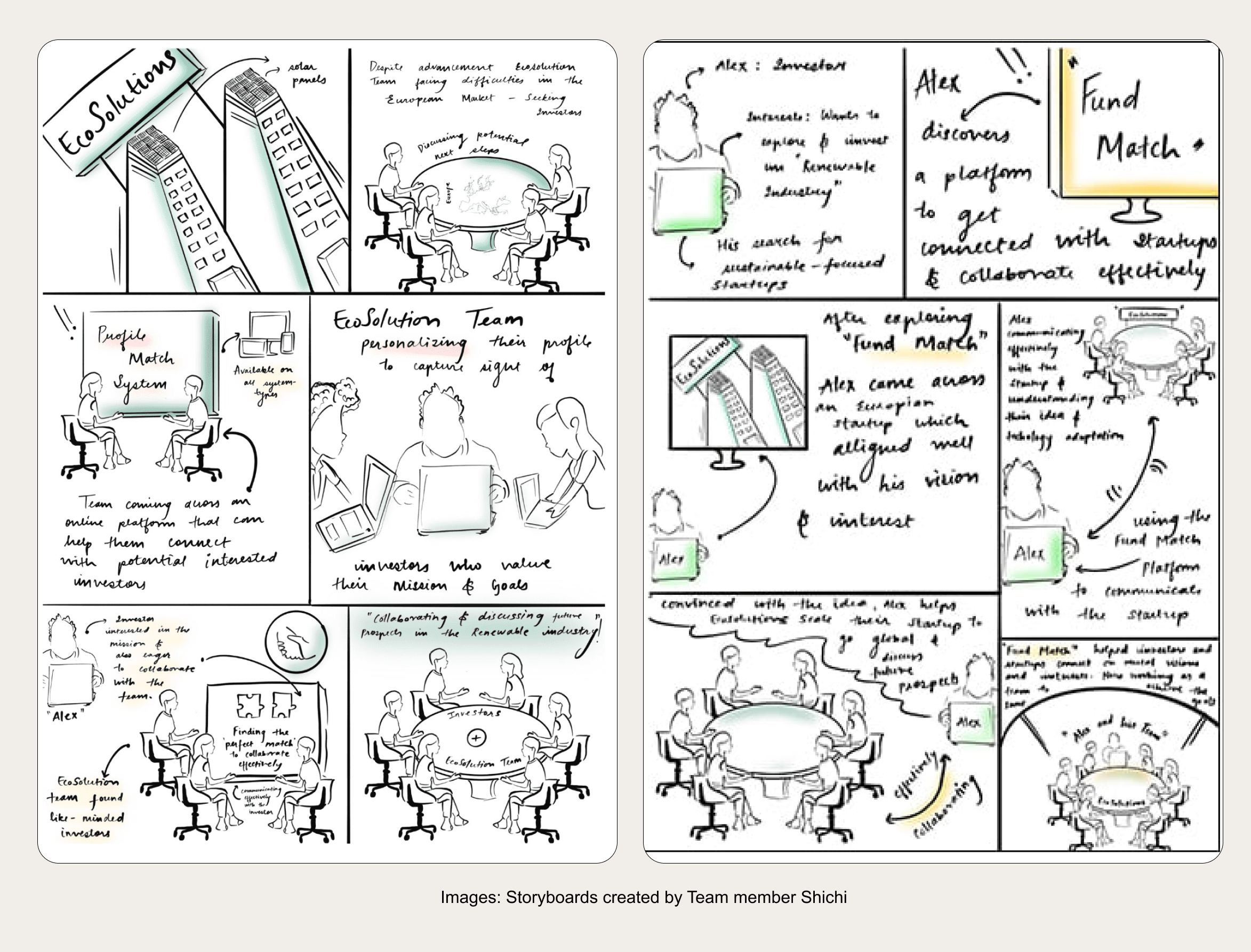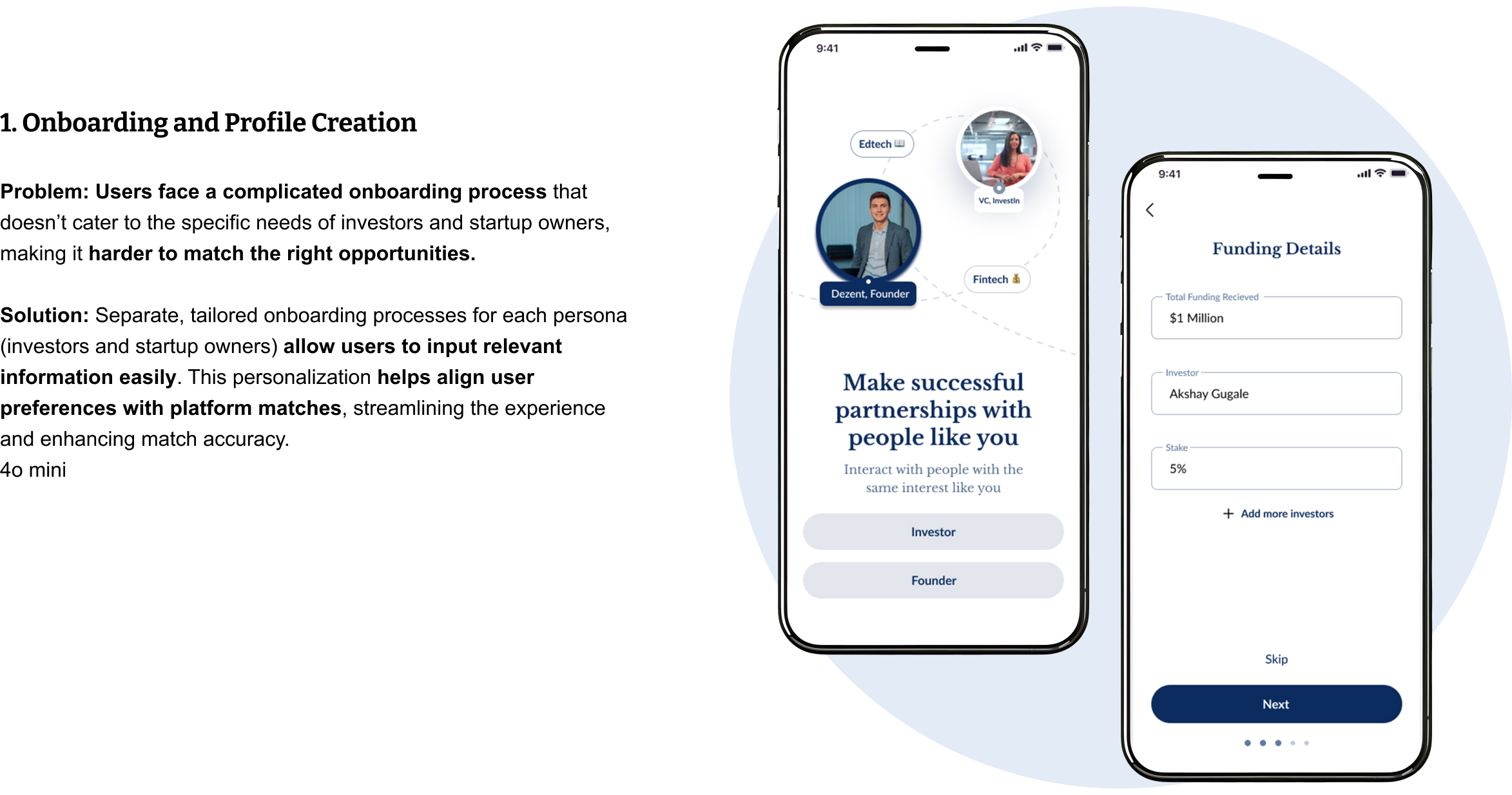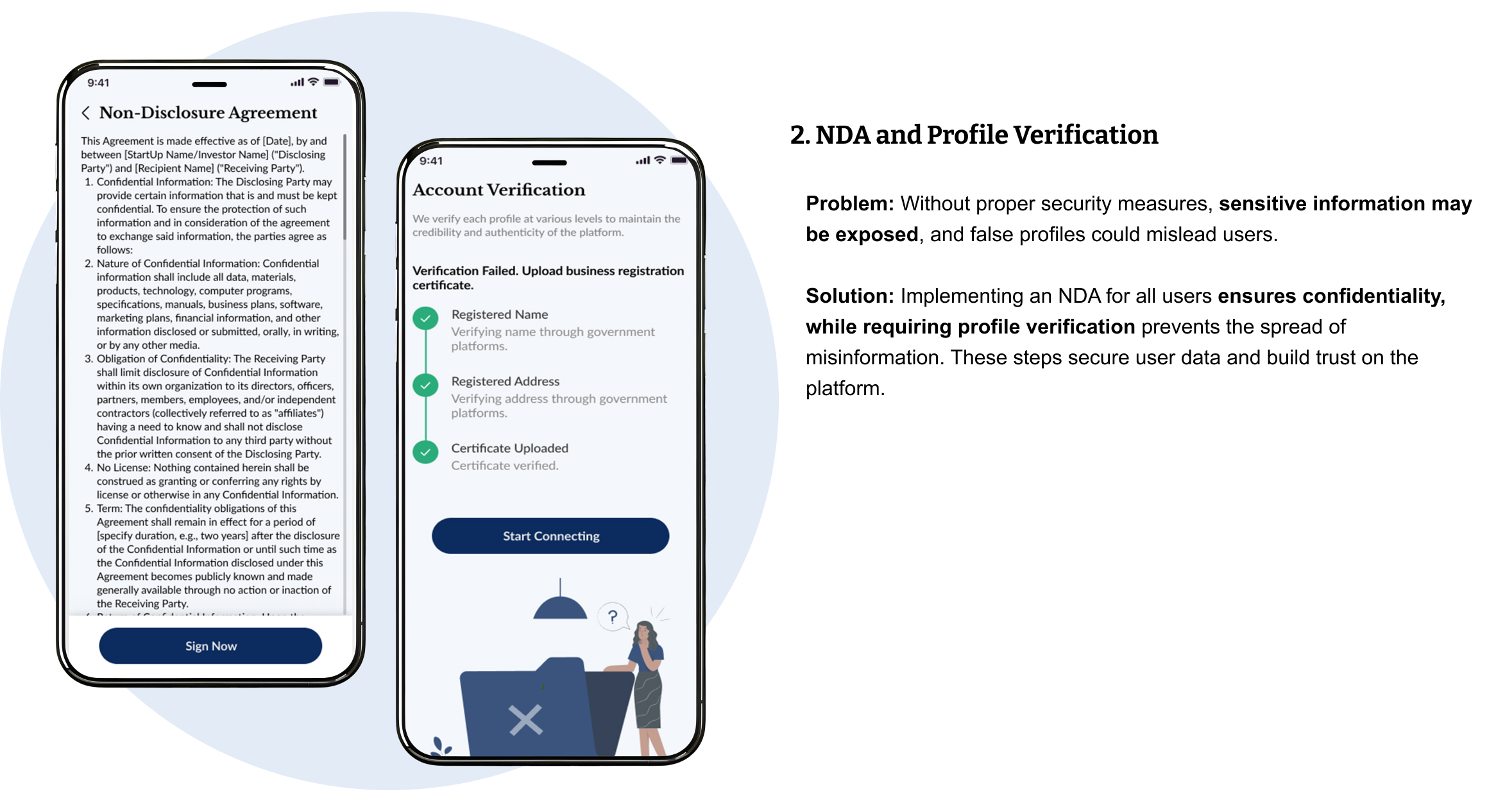
I explored the world of startups and investors, where bold ideas often clash with limited networks and endless searches. Startups struggle to convey their value, while investors sift through countless options, missing the right fit. Information gaps, networking barriers, and poor communication widen the divide. I saw an opportunity to reimagine how these two worlds connect—through clearer conversations, better avenues for interaction, and a shared understanding of each other’s needs. By bridging this gap, we can open doors to stronger partnerships and the kind of innovation that sparks real change.


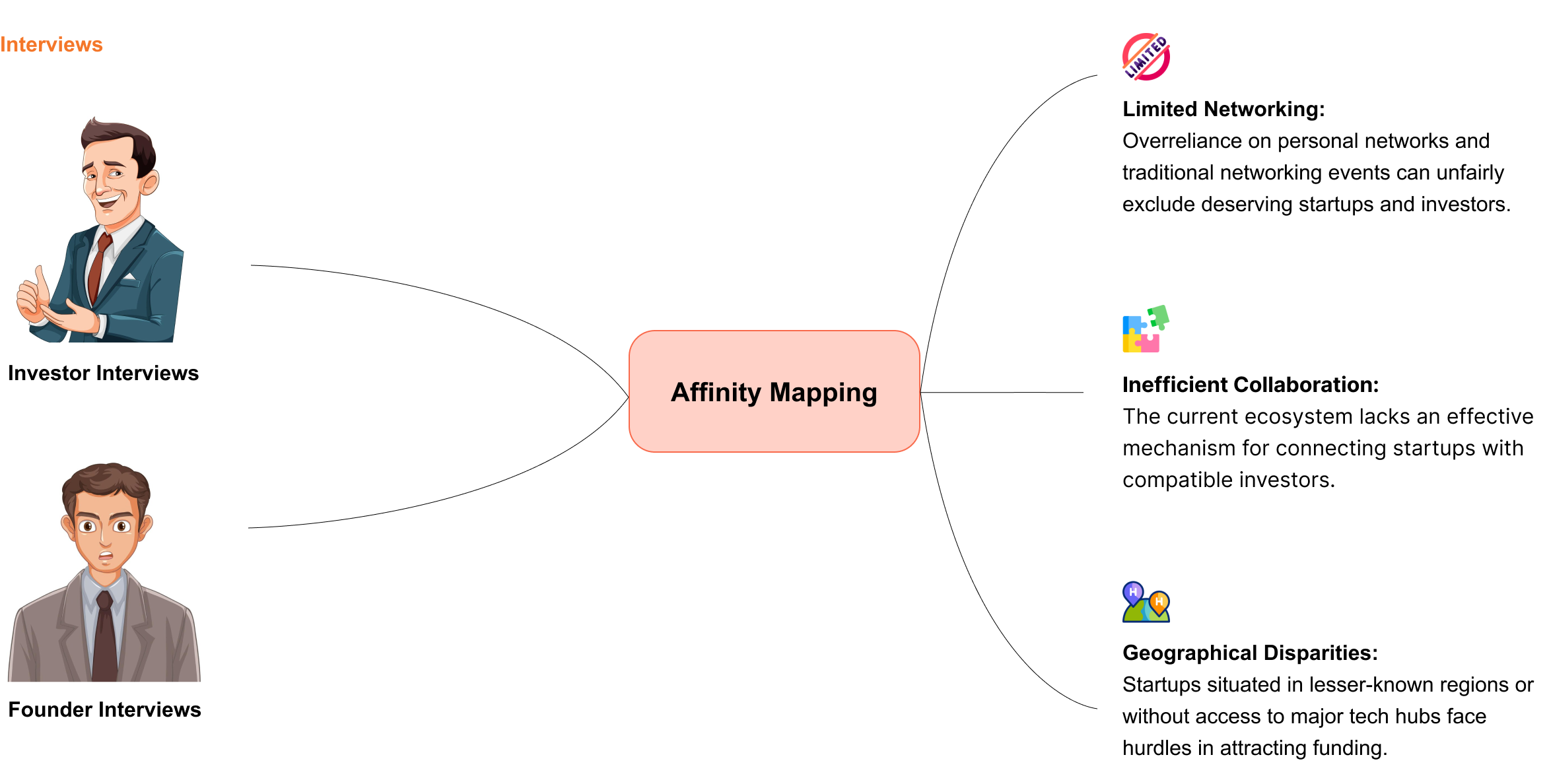

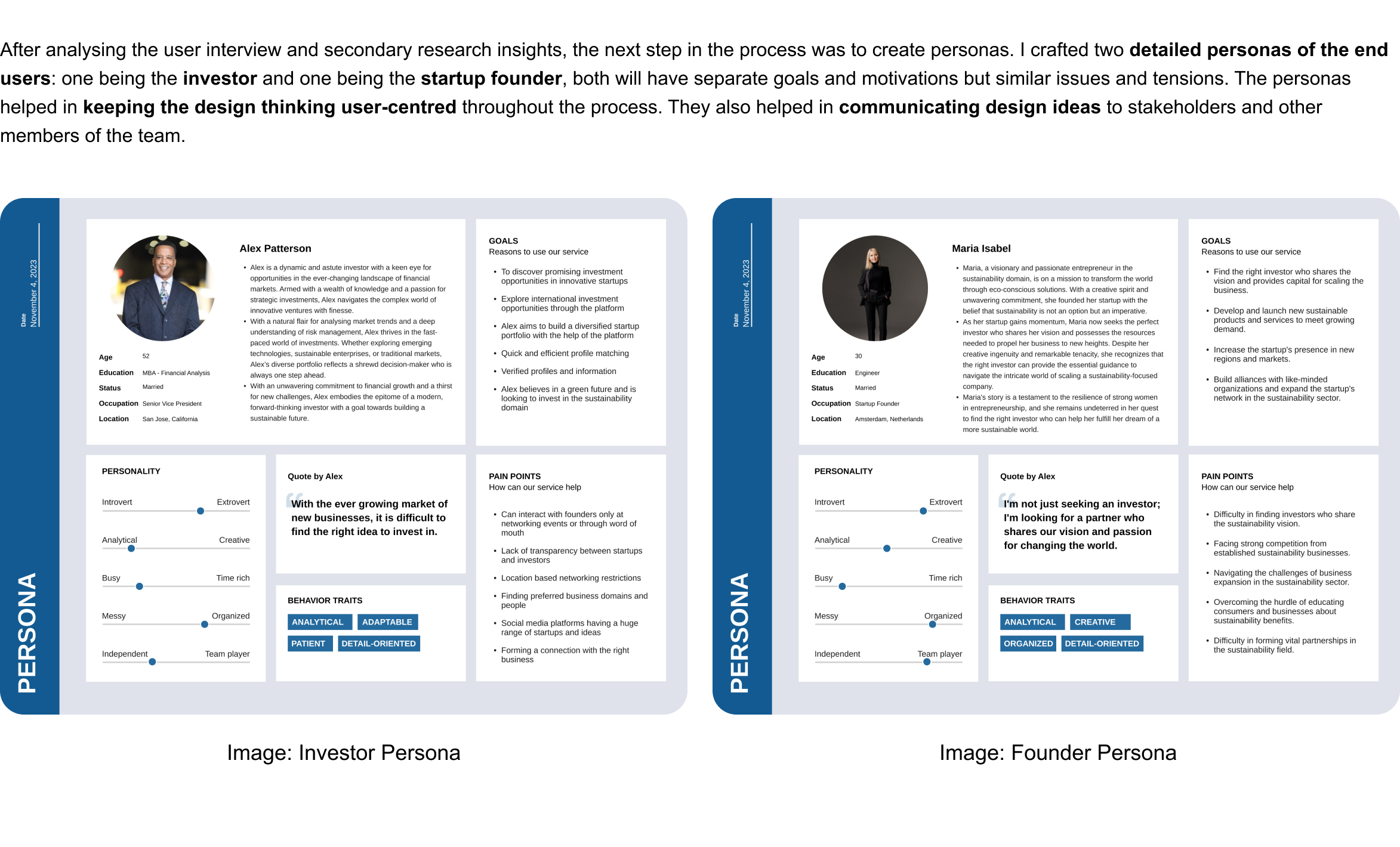
Based on this problem identification, we brainstormed ideas and developed various solutions to enhance the matching process between entrepreneurs and investors, aiming to maximize opportunities for both.
We came up with around 50 different ideas to solve the problem and create a user friendly solution. It took us 3-4 sessions to brainstorm our ideas. We used the individual and group brainstorm method where each of us first thought of different ideas on our own and then discussed our ideas together as a group. This helped us come up with multiple ways to solve the problem and use different technologies and trends in our ideas.


%20copy.jpg)
